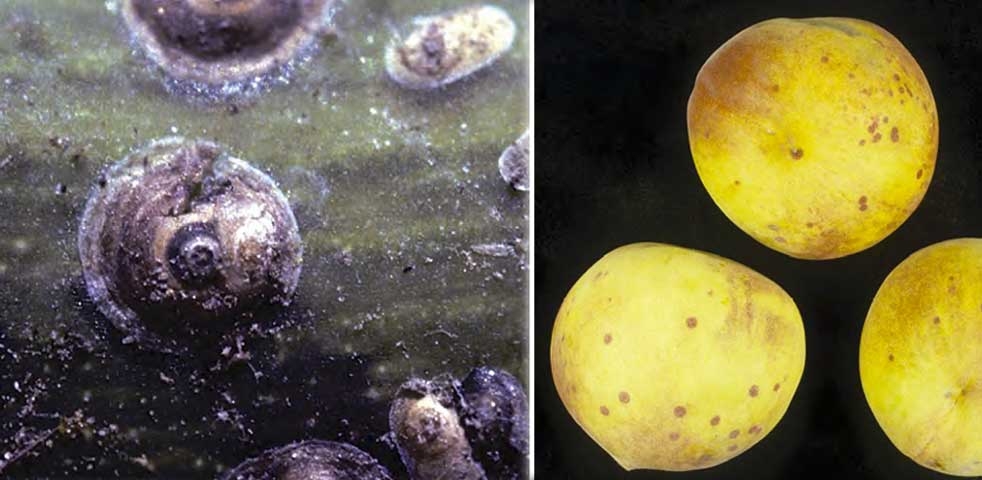San José scale is an extremely important pest of pome and stone fruit. It is a sucking insect that injects a toxin into the plant as it feeds, causing localised discolouration.
San José scale is a difficult pest to control within orchards due to its life cycle.
The first indication of San José scale might be when infested fruit is found at harvest or packing.
Careful examination of trees during dormancy to look for the insect and watching for the trees that retain leaves during winter are good monitoring tools.
Using pheromone traps after the pink stage of flower development will give an indication of the population size of males. Crawlers can be monitored 4–6 weeks after bloom using double-sided tape with a thin layer of petroleum jelly around infested tree limbs.
Pest identification
San José scale adult females are yellow with rounded dark grey scales. Females are wingless and legless, measuring 2.5 mm in diameter.
Males have a dark band across their back, long antennae, legs and wings. Crawlers are approximately 0.25 mm long and bright yellow.
Damage
San José scale sucks the sap and juice out of the tree and fruit while also injecting a toxin. This causes loss of tree vigour, stunted growth and limb death.
On fruit, San José scale feeding will cause slight depressions with a red–purple halo.
If the populations are low, damage will be concentrated to the bottom of the fruit.
Management
San José scale overwinter as immature scales. In spring, the winged males emerge and mate with the wingless females.
Approximately one month after the first male flight, the first crawlers can be seen. Understanding this life cycle helps target control and management.
Dormant season treatments are the most effective.
Cultural and physical
The most effective cultural control is to prune out infested branches.
This will reduce scale numbers and opens up the tree canopy, which allows effective penetration if spray treatments are used.
Control ant populations as they spread the scale crawlers and protect them from natural enemies.
Always provide optimal growing conditions, including appropriate nutrition and water to reduce the number of susceptible plants at lower pest populations.
Always ensure that the growing area and surrounds are weed-free to minimise competition for resources.
Biological
There are a number of natural enemies that can be used to control San José scale.
The most common predatory insects and naturally occurring parasitoid wasps include Cryptolaemus (Cryptolaemus montrouzieri), green lacewings (Mallada signata) and Chilocorus beetles (Chilocorus circumdatus).
A range of fungi and bacteria is available that can infect and kill scale insects, however, these are less likely to reduce populations unless they become very abundant.
It should be noted that almost all pesticides will negatively affect beneficial insect populations when trying to control San José scale.
Download the Orchard plant protection guide
See this article in Tree Fruit April 2020




















